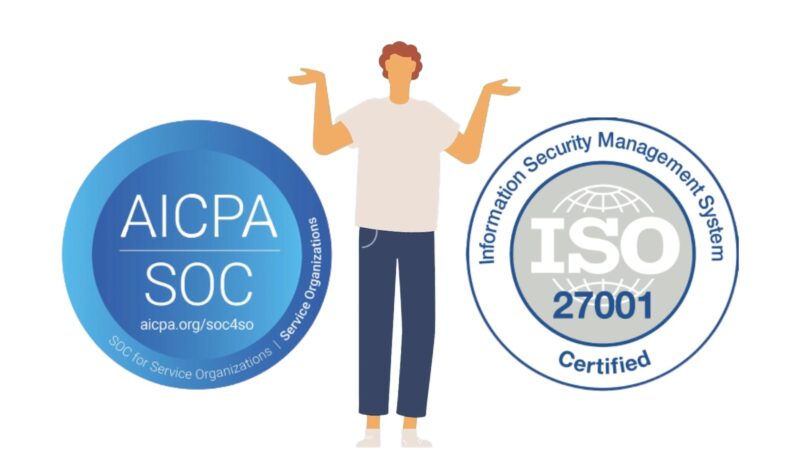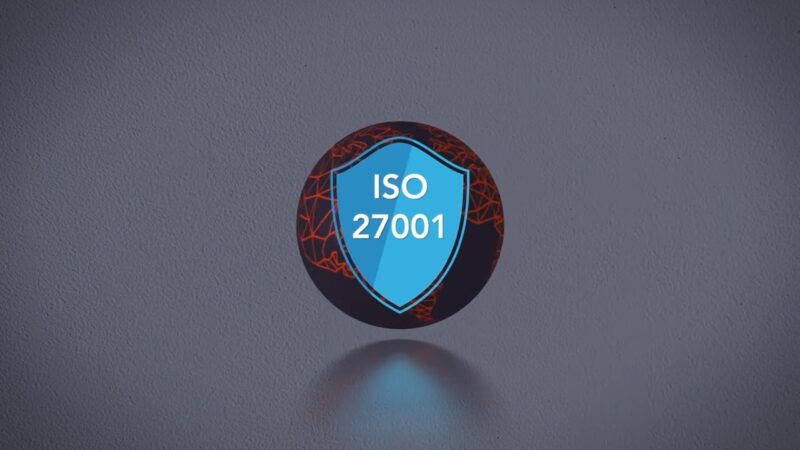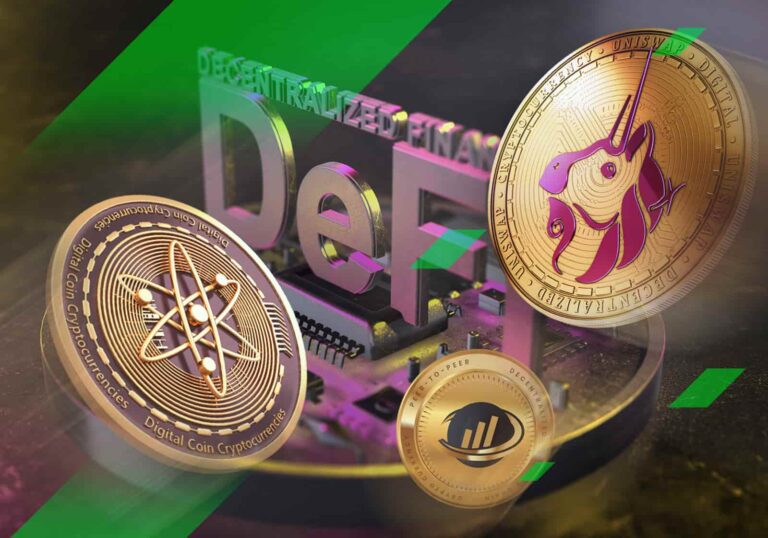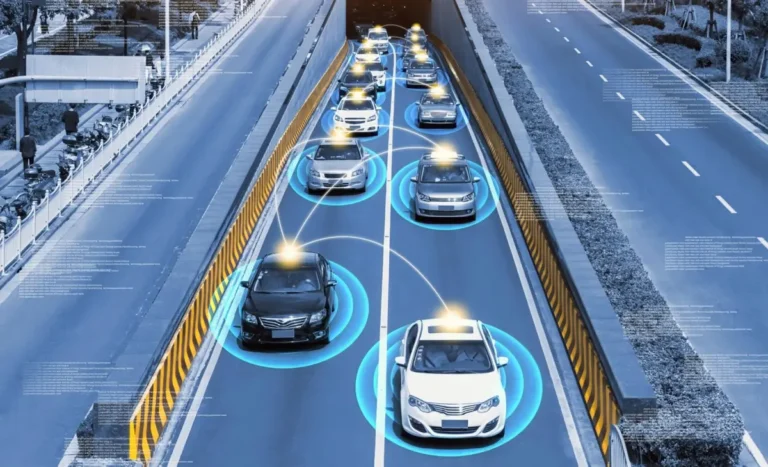Compliance standards are often a source of confusion for people who aren’t tasked with building and implementing the controls that help an organization meet an auditor’s expectations.
There are many different information security standards developed by different organizations, some of which only apply to specific industries or are more relevant to companies that do business in certain countries around the world.
Understanding the difference between them is often less important than knowing which ones are necessary for ensuring customers and vendors that an organization is a trustworthy partner when it comes to managing data.
Two of the most common compliance standards are ISO/IEC 27001:2013 (often shortened to ISO 27001) and SOC 2 reports. While they cover much of the same ground, there are some notable differences between them.
ISO 27001 Certificates vs SOC 2 Attestation Reports

The primary difference to keep in mind with ISO 27001 and SOC 2 reports is that only one of them (ISO 27001) involves a certificate of compliance. Although both are broadly referred to as compliance standards and involve an external audit, the results of that audit are quite different.
Upon completion of an ISO 27001 audit, the auditor issues a certificate of compliance that indicates an organization meets the requirements laid out by the International Organization for Standardization (ISO) and International Electrotechnical Commission for protecting information and managing risk.
An SOC 2 attestation report, on the other hand, does not involve certification or a certificate of compliance. It is an assessment by an accredited auditor as to whether or not a service organization’s security controls meet the relevant Trust Services Criteria that fall within the scope of the audit.
Differences between ISO 27001 vs SOC 2
While both compliance standards specifically address security, they focus on different areas. Understanding what each standard focuses on can help organizations determine which one they need to consider when evaluating a potential vendor or preparing to be audited as a contractor.
What is ISO 27001?

Broadly speaking, ISO 27001 focuses on “top of the pyramid” information security concerns, assessing how an organization protects the integrity of the data it controls and processes. At its core, the standard evaluates risk to information assets, which can be defined as IT systems, processes, and intellectual property.
Controls, in the form of policies, processes, and procedures, must be put in place to mitigate those risks and ensure that all reasonable efforts are being made to protect information assets. These measures are often considered the foundation of information security, so meeting ISO 27001 standards often helps an organization to implement additional controls to meet other compliances (such as HIPAA or PCI DSS).
To obtain a certificate, a service organization must demonstrate that its Information Security Management System (ISMS) is capable of identifying, analyzing, and addressing all risks associated with information assets. The ISMS lays out controls like encryption protocols and access procedures as part of a comprehensive business model that ensures the Confidentiality, Integrity, and Availability (C, I, & A) of data.
What is SOC 2?
While ISO 27001 is a top-down view of security that establishes the core controls and principles of a service organization’s business model regarding data management, an SOC 2 report provides an assessment of the controls that help to support that business model. The report itself is informed by the AICPA’s Statement on Standards for Attestation Engagements (SSAE), which provides guidelines for how organizations should assess, evaluate, and report on their risk and security controls.
An SOC 2 report takes a customer-focused approach to information security, looking at the logical and physical controls a service organization has put in place to manage and record how people access data, how those users are authenticated, and how any inappropriate activity is reported and managed.
The scope of an SOC 2 report varies according to which Trust Services Criteria need to be evaluated. While all SOC 2 reports include Security within their scope (which is why it’s often called the “common criteria”), an audit could also examine controls related to Availability, Processing Integrity, Confidentiality, and Privacy as well.
Preparing for a compliance audit is often a daunting situation for an organization. The best strategy an IT leader can take is to regard compliance as a year-round priority rather than something to think about only when it’s time to renew a certificate. An audit should be a verification of ongoing practices and an opportunity to improve processes, not something that represents a disruption.
By focusing on the controls, procedures, and policies that make up the core criteria for any ISO 27001 or SOC 2 audit, service organizations can ensure that they’re always prepared to meet these exacting standards for their customers and partners.
FAQ
Who issues the ISO 27001 certification?
The ISO 27001 certification is issued by accredited certification bodies after a successful audit of an organization’s Information Security Management System (ISMS).
How often do organizations need to renew their ISO 27001 certification?
Typically, the ISO 27001 certification is valid for three years, with surveillance audits conducted annually to ensure ongoing compliance.
Is SOC 2 mandatory for all service organizations?
No, SOC 2 is not mandatory. However, it is often required by clients or partners to ensure that a service organization has adequate controls in place.
Can an organization have both ISO 27001 and SOC 2?
Yes, many organizations pursue both certifications to demonstrate a comprehensive approach to information security and to meet varying client and regulatory requirements.
How long does it take to achieve ISO 27001 or SOC 2 compliance?
The duration varies based on the organization’s size, complexity, and existing controls. On average, it can take anywhere from 6 to 18 months.
Do ISO 27001 and SOC 2 replace the need for other compliances like HIPAA or PCI DSS?
No, while there may be overlaps, each compliance standard has its unique requirements. Organizations must ensure they meet all relevant standards for their industry or client needs.
What is the difference between SOC 2 Type I and Type II reports?
SOC 2 Type I reports on the design and implementation of controls at a specific point in time. SOC 2 Type II reports on the operational effectiveness of those controls over a period, typically 6 to 12 months.
Final Words
Understanding the nuances between ISO 27001 and SOC 2 is crucial for organizations aiming to demonstrate their commitment to information security. While both standards emphasize the importance of robust security controls, their focus and outcomes differ. By being informed and proactive, organizations can navigate the compliance landscape effectively, ensuring they remain trusted partners in today’s data-driven world.








